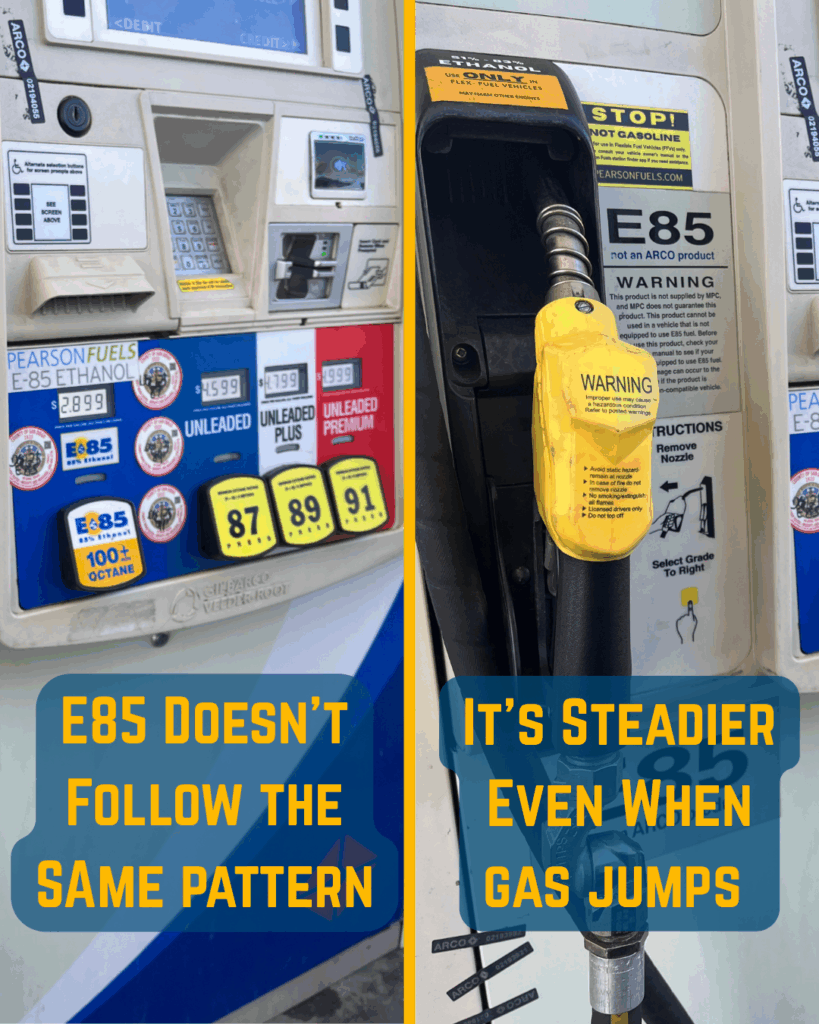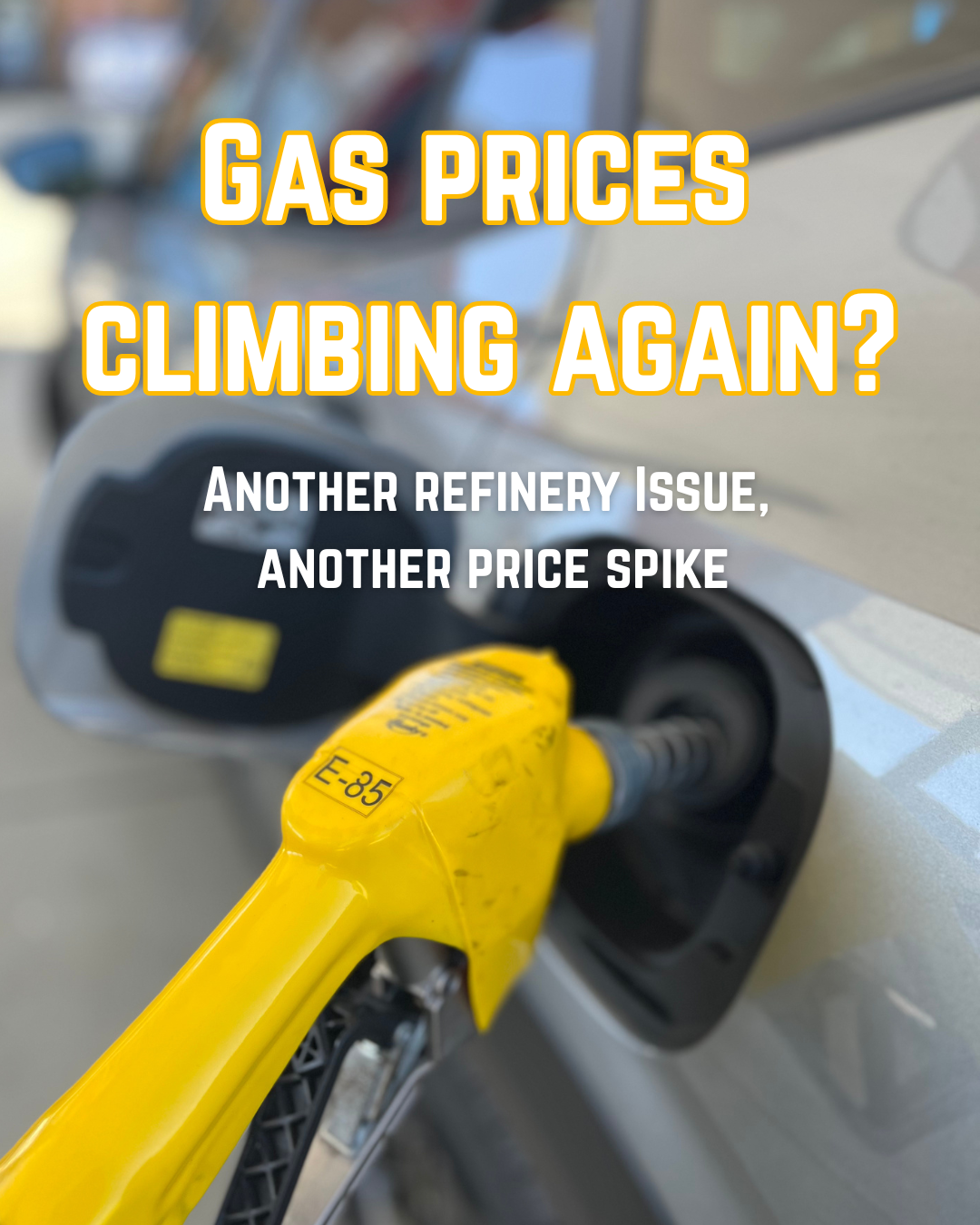A Steadier Choice at the Pump
October 14th, 2025
If you’ve filled up your tank in California lately, you’ve probably noticed how quickly gas prices can change. From week to week — and sometimes day to day — regular gasoline prices rise and fall with the global crude oil market, production costs, and seasonal demand. For drivers trying to plan a budget, that volatility can make things unpredictable.
Unlike regular gasoline, E85 is made primarily from ethanol and because its supply chain is more local and less dependent on crude oil imports, E85 prices tend to move more gradually and remain less affected by global market swings.
That means when the price of oil spikes, E85 doesn’t necessarily follow. While gasoline prices can fluctuate sharply based on factors outside California, E85’s pricing reflects more regional and agricultural trends. The result: a more predictable price curve and fewer surprises at the pump.
In recent years, E85 has consistently remained $1.50–$2.00 per gallon less than regular gasoline across California. Even as fuel markets shift, E85 continues to deliver a reliable price advantage — giving flex fuel drivers a cleaner, more affordable way to fill up.
Beyond cost, E85 also offers an environmental benefit, reducing greenhouse gas emissions compared to gasoline. It’s one of the simplest ways California drivers can cut both their fuel costs and carbon impact, all without changing how they drive.
As more stations across the state offer E85, thousands of drivers are discovering that they already own a flex fuel vehicle (FFV) — one that can run on either E85 or gasoline. Many FFVs can be identified by a yellow gas cap or a flex fuel badge.
Switching between fuels is seamless: just choose E85 when it’s available to take advantage of cleaner combustion and steadier pricing.
Fuel smarter. Choose stability. Choose E85.
📍 Find E85 near you — and check if your car is compatible — in the Pearson Fuels App







